Note
Photoshop is also a good program for you to make your gifs :) (I'm not a hater)
I know but I would have to learn photoshop from the ground up again and honestly I don't have the time nor the energy to do that at the moment, so I stick with the programs I know.
15 notes
·
View notes
Note
Alice isn't leaving you alone lol
I have no idea what this is about?
5 notes
·
View notes
Text
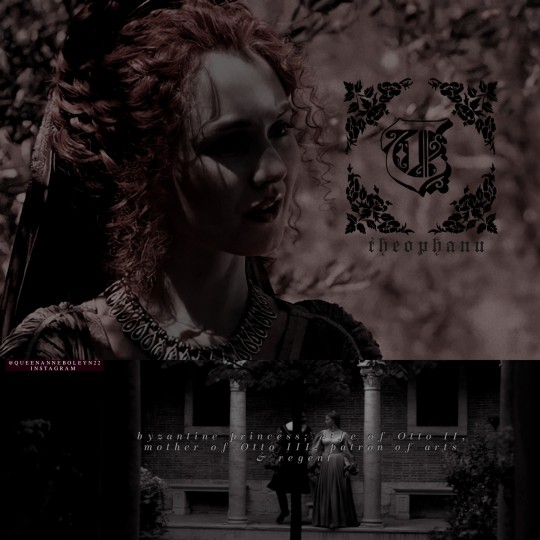
Theophanu was a Byzantine noblewoman, whose uncle acceded to the throne. That she was not herself of imperial descent, not born to the purple (porphyrogenita), but a niece of the man who had taken over the throne in a coup (John Tzimiskes), was a source of disappointment to some when she married the son of Otto I. But Theophanu had been educated to play a role in an imperial court. She was personally impressive and intelligent and she participated in her husband’s government, traveling with him, the court had no fixed center , even on military campaigns.They had five children, of whom four survived: Otto III, Adelaide, Sophia and Matilda. When Otto II died in December 983, Theophanu served as regent for their son, Otto III, at first sharing the regency with her mother-in-law, empress Adelaide, but eventually taking over on her own.
Though she had differences with her mother-in-law, empress Adelaide, some of them inherited from her husband, the two worked together to secure the throne for Otto III from his cousin, Henry II of Bavaria (“the Wrangler”), who had proclaimed himself king. Theophanu died in 991, still in her 30’s.The chronicler Thietmar eulogized her as follows: "Though [Theophanu] was of the weak sex she possessed moderation, trustworthiness, and good manners. In this way she protected with male vigilance the royal power for her son, friendly with all those who were honest, but with terrifying superiority against rebels."
- S: Communications and Power in Medieval Europe, The Carolingian and Ottonian Centuries, ed. Timothy Reuter, (London: Hambledon, 1994),
77 notes
·
View notes
Note
Hi!!! I absolutely adore your edits ❤️ would you mind if I asked you what program/ app you use to make them, they're immaculate
I use Vegas Pro 18.0 to render, edit and color the video files and put that files into Movavi Video Converter 21 to convert them into gifs.
2 notes
·
View notes
Photo

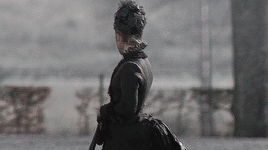
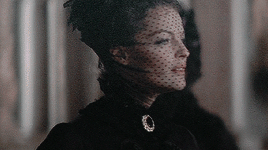






On this day in history, 10th September 1898, Elisabeth of Austria is murdered by Luigi Lucheni at Geneva, Switzerland.
Accompanied by Irma Sztaray, as always dressed in black, her fan in one hand and the parasol in the other, ¨Countess von Hohenembs¨ walked to the landing stage, only a few hundred meters from the hotel. And it was along this path that Luccheni was lying in wait. When the two ladies came abreast of him, he threw himself at them, cast a swift glance under the parasol to make certain, and stabbed. He had earlier consulted an anatomical atlas to learn the precise location of the heart. His aim was accurate.
Elisabeth fell on her back. But the force of the fall was broken by the weight of her heavy, pinned-up hair. The assasin fled, was captured by passerby, and taken to the police station. At first it was not realized that he was a murderer; for the foreign lady got to her feet immediately after the fall and thanked all those who had helped her, speaking in German, French, and English. Her clothes were dusted off. The hotel porter, who was a witness to the deed, begged the two ladies to return to the hotel, but Elisabeth refused. She wanted to get to the boat.
Walking quickly, because little time was left before the ship’s departure, the ladies went to the landing stage. Elisabeth, in Hungarian, to Countess Sztaray: ¨What did that man actually want?¨
Countess Sztaray: ¨The porter?¨
Elisabeth: ¨No, the other one, that dreadful person.¨
¨I do not know, Your Majesty, surely he is a vicious criminal.¨
¨Perphaps he wanted to take my watch?¨ the Empress conjectured.
The ladies walked about a hundred meters from the site to the ship. It was not until they were on board the steamer, just departing, that Elisabeth collapsed. It was thought that she had fainted as a result of the fright she had endured. It was only when her bodice was unbuttoned so that her chest could be rubbed that a tiny brownish spot and a hole in her batiste camisole became apparent. Only then was the extent of the tragedy evident.
The ship’s captain was informed - he was unaware that the Empress of Austria was one of his passengers. The boat turned around and sped back to Geneva. A litter was improvised from oars and velvelt chairs; the Empress was bedded on it and returned to the hotel as quickly as possible. There the doctor could do nothing but pronounce her death. — Brigitte Hammann, The Reluctant Empress: A Biography of Empress Elisabeth of Austria
427 notes
·
View notes
Note
Hi There, My great grandmothers name was Margit Matulay. She received a royalty pension from the Austrian government. I'm trying to find out how she was related to the royals. My grandma always told me her grandma was a princess. I believe her name may have been Maria Przibil, though it's hard to confirm through records. I was wondering if anyone can point me in any directions in how to continue this research. Any databases, etc. Thanks.
From the top of my head, I don't know a anything really but maybe someone can help out here.
My only easily accessible idea would be to check the online archive of Austrian newspapers, maybe there was a birth announcement or something similar. It of course helps if you speak or at least can read German.
The last name might also be a hint of Bohemian ancestry. It is not really German/Austrian in my opinion and Bohemia was once part of the Austrian realm.
9 notes
·
View notes
Photo
Thank you. I will add it to the original post once I'm on my laptop.










House of Welf & the Ottonians: Adelaide of Burgundy
Adelaide or Adelheid was born either in 931 or 932 as the daughter of King Rudolf II of Burgundy and Italy, at the time, and Bertha of Swabia.
Her older brother Conrad would succeed to the throne of Burgundy after their father’s death. But since Conrad was still a minor he was sent to their allies in Magdeburg.Adelaide’s mother Bertha would take over the regency in that time but it would end quickly when Hugo of Italy has her and her daughter abducted. His intention behind it was to marry Bertha to rule over Italy. Adelaide became engaged to his son Lothair.
Their marriage would be a happy one, although short-lived because of Lothair’s early death. He gifted Adelaide many grounds and possessions over which she could rule herself. Furthermore, he made her his co-regent. The couple had a daughter, Emma of Italy, who would later become the queen consort of Western Francia.
The Calendar of Saints states that her first husband was poisoned by the holder of real power, his successor, Berengar II of Italy, who attempted to cement his political power by forcing her to marry his son, Adalbert; when she refused and fled, she was tracked down and imprisoned for four months at Como. In the end, Adelaide managed to escape and sought an alliance with Otto I, King of East Francia (Germany). She probably had met him in her youth when her father presented him with the Holy Lance. Furthermore, Adelaide’s brother Conrad lived at his court in Magdeburg.
Otto and Adelaide married in 951. The crushing of a revolt in 953 by Liudolf, Otto’s son by his first marriage, cemented Adelaide’s position, for she retained all her dower lands. Pope John XII crowned Otto Holy Roman Emperor in Rome on February 2nd, 962, and, breaking tradition, also crowned Adelaide as Holy Roman Empress.
She and their eleven-year-old son, Otto II, accompanied Otto in 966 on his third expedition to Italy, where Otto restored the newly elected Pope John XIII to his throne. Adelaide remained in Rome for six years while Otto ruled his kingdom from Italy. Their son Otto II was crowned co-emperor in 967, then married the Byzantine princess Theophanu in April 972, resolving the conflict between the two empires in southern Italy, as well as ensuring the imperial succession. Adelaide and her husband then returned to Germany, where Otto died in May 973.
In 983, her son Otto II died and was succeeded by her grandson Otto III under the regency of his mother Adelaide’s daughter-in-law Dowager Empress Theophanu. When Theophanu died in 990, Adelaide assumed regency on behalf of her grandson the Emperor until he reached legal majority four years later. Adelaide resigned as regent when Otho III was declared of legal majority in 995. A year later, he was crowned Emperor. Otto III thanked her in a personal letter stating that she made him emperor and that his honors would be her honors too.
In the end, Adelaide retired at a nunnery in Selz which she had founded herself and died on December 16th, 999.
// Unknown actress as Adelheid von Burgund in Geschichte Mitteldeutschlands (History of Middle Germany), Episode “Kaiserin Adelheid - Die mächtigste Frau der Ottonen” (Empress Adelaide - The most powerful woman of the Ottonians)
237 notes
·
View notes
Note
How can i watch movie or series about fatima kariman? If you know any name of movie or series can you please tell me
I don't know about any. But I would be interested in one too. So far Countess Cosel has received much more attention than nearly any other mistress of August the Strong. I wish it would change.
1 note
·
View note
Text

Shameless self-promotion but I just opened a sideblog about Elisabeth “Sisi” of Austria (née in Bavaria) in movies and series. There are quite a lot of projects coming about her and there have been some in the past. So if you are interested, please follow @sisionscreen
#period drama#costume drama#historical drama#Sisi#Sissi#Elisabeth of Austria#Elisabeth of Austria-Hungary#Elisabeth in Bavaria
40 notes
·
View notes
Photo

Sidonie Werner’s 161st Birthday
Date: March 16, 2021
Happy 161st birthday to German-Jewish educator, feminist, and activist Sidonie Werner. Today’s Doodle, illustrated by Berlin-based guest artist Lihie Jacob, honors her life and legacy as a champion for women’s rights and youth social programs.
Sidonie Werner was born in Poznań, Poland, on this day in 1860. After completing a women’s teacher seminar and attending lessons at a Jewish elementary school, she entered the Hamburg school system, where she remained a teacher until she retired.
In 1893, Werner’s public work as a gender rights activist began in earnest when she co-founded the Israelite-Humanitarian Women’s Association (IHWA). She also co-founded the Jewish Women’s Association in 1904, an organization she later led as chairwoman. In 1908, she became the leader of the IHWA, where she successfully instituted programs for women and children, such as providing professional training for women to make a living outside of domestic work.
Throughout the early 1910s, Werner strengthened her efforts by serving leadership roles in a number of other organizations including the City Federation of Hamburg Women’s Association, the Central Welfare Office of German Jews, and the Hamburg Jewish School Association, where she served as the only woman on the board. In 1929, Werner assembled the World Conference of Jewish Women in Hamburg, which united 200 representatives from 14 countries and increased international solidarity among Jewish women.
Happy birthday, Sidonie Werner!
Guest Artist Q&A with Lihie Jacob
Today’s Doodle was illustrated by Berlin-based guest artist Lihie Jacob. Below, she shares her thoughts behind the making of this Doodle:
Q. Why was this topic meaningful to you personally?
A. This was a fantastic journey for me. I read anything I could find about Sidonie, and the more I delved into her life’s work, the more I understood just how much impact she had on my own communities. My family moved to Frankfurt a.M. from Israel when I was young. I soon learned a major part of the “Jüdischer Frauenbund”—which Sidonie helped found—operated right in the neighborhood I grew up in. As a Jewish woman and a feminist, I am really thankful to Sidonie and the pioneering women who set in motion so many important political changes and philantropic foundations.
Q. What were your first thoughts when you were approached about working on this Doodle?
A. I knew I needed to do extensive visual research and understand the nuances of class, fashion, Jewish attire etc. in the years in which Sidonie lived. I wanted to convey both her character as well as the breadth of activism in which she was involved. I hope I did her justice in this humble way.
Q. Did you draw inspiration from anything in particular for this Doodle?
A. I decided to adopt the linked arm stance, often seen in marches and demonstrations, as a way to show the solidarity and determination that Sidonie radiated.
Q. What message do you hope people take away from your Doodle?
A. I hope they are inspired to read about Sidonie’s life and remember that what she started needs to be continued. It’s a great way to honor her and the principles she stood for.
Location: Germany
Tags: Birthday, Guest Artist, educator, education, League of Jewish Women
https://ift.tt/v9YN86
30 notes
·
View notes
Photo










the granddaughters of maria theresa and francis i
160 notes
·
View notes
Photo










House of Hohenzollern & of Oldenburg: Princess Luise Ulrike of Prussia
Luise was the tenth child and sixth daughter of King Frederick William I of Prussia and his wife Princess Sophia Dorothea of Hanover. She was the sister of Frederick the Great, Margravine Wilhelmine of Brandenburg-Bayreuth, Margravine Friederike Luise of Brandenburg-Ansbach, Margravine Sophia Dorothea of Brandenburg-Schwedt, Princess Anna Amalia, Abbess of Quedlinburg and Princes August Wilhelm, Friedrich and August Ferdinand of Prussia.
Unlike most of her older siblings, she was interested in the military from a young age. This made her her father’s favourite child and her mother once said that Luise’s father could never say no to her. She was closest to her sister Sophia Dorothea and her younger brother August Wilhelm. Luise also shared interests in science and culture with Frederick the Great and he corresponded with her about his war experiences for most of his life. At her mother’s court she was introduced to Voltaire with whom she corresponded for the rest of her life.
Several high-ranking dynastic marriage were considered for Luise, among them ones to Britain, Spain and Hesse. In the end, it was decided that she should marry the future Swedish King. However her brother initally wanted to marry her sister Anna Amalia to Adolf Frederick, mainly because he thought her easier to control than Luise Ulrike, who was described as arrogant, haughty and scheming by contemporaries.
And scheme she did. Luise was a supporter of a absolute monarchy while Sweden, her new home was a parliamentary monarchy. During her tenure as Crown Princess and Queen, she allied herself with those that would support her ideas and did not even fear to plan coups. Furthermore, she stayed loyal to her homeland of Prussia and opposed Sweden’s declaration of war against Prussia in the Seven Years’ War. However, Luise’s power was closely linked to her husband. When his health declined and her son was declared an adult, she unsuccessfully opposed him receiving a seat in the royal council. Their strained relationship got even worse when Gustav decided to honor his engagement to his Danish bride instead of marrying his mother’s Prussian candidate. Luise retaliated by harrassing the bride once she arrived at court.
Nevertheless, Gustav ordered his mother be protected when his father died since he feared for her safety due to her having become more and more unpopular. When her son overthrew the parliamentary monarchy and replaced it by an absolutist one, she congratulated him. She was in Swedish Pomerania at the time they declared their loyalty to Gustav’s new constitution. His uncle Frederick the Great warned his mother that they were facing war now, Luise declared that she would defend the province against Prussia and everyone else attacking with her own blood.
The final blow to her relationship with her oldest son came during the succession scandal of 1777/78. Luise was visited by her younger sons who told her about all the women at court having affairs, except herself. She said that her daughter-in-law surely must be an exception as well, and her sons laughed and asked whether she hadn’t heared the rumors of Sophia Magdalena’s affair with Adol Fredrik, Count Munck. Luise ordered Prince Charles to investigate the situation. So Charles talked to the Count, who talked to the King and the King again talked to his brother Charles who blamed the whole situation on his mother. When Gustav’s son was born in 1778, the conflict erupted since Luise accused her son of having his son fathered by another man. She was supported by her favourite children Sophia Albertine and Frederick. In return, Gustav threatened to exile his mother to Pomerania. In the end, the entire royal family, except the royal couple, was forced to sign a declaration in which they resign their accusations. The relationship between mother and son remained broken until she was on her deathbed.
Luise Ulrike died in Svartsjö Palace, outside of Stockholm, on July 16th, 1782. She was 61 years old, and would have celebrated her 62nd birthday just 8 days later.
// Grace Molony in The Great.
#historyedit#women in history#historic women#Louisa Ulrika of Prussia#german history#swedish history#european history#Louise Ulrika of Sweden#Luise Ulrike of Prussia#Luise Ulrike of Sweden#House of Hohenzollern#House of Oldenburg#1700s#18th century#Prussian history
194 notes
·
View notes
Photo









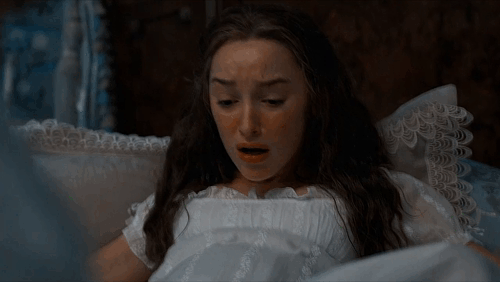
House of Wittelsbach & de Beauharnais: Princess Auguste of Bavaria
Auguste was the oldest daughter and second child of King Maximilian I. of Bavaria and his first wife Princess Auguste Wilhelmine of Hesse-Darmstadt. She is the younger sister of King Ludwig I. of Bavaria and the older sister of Princess Amalia of Bavaria, Austrian Empress Caroline Augusta and Prince Karl Theodor of Bavaria. By her father’s second marriage, she is also the half-sister of Queen Elisabeth Ludovika of Prussia, Queens Amalie Auguste and Maria Anna of Saxony, Archduchess Sophie of Austria, Duchess Ludovika in Bavaria and Princess Maximiliane of Bavaria. Through her siblings, she was an aunt to Emperor Franz Joseph and his wife Elisabeth, Kings Albert I and George I of Saxony, Queen Marie of the Two Sicilies, King Otto of Greece and King Maximilian II of Bavaria.
Auguste’s mother died when she was just 7 years old. She had originally been engaged to her maternal cousin Grand Duke Charles of Baden but when Napoleon Bonaparte agreed to raise to the status of a kingdom, he wanted to marry his adoptive son Eugène de Beauharnais to Auguste in return. Napoleon had send his son a cup with Auguste’s portrait on it and ordered him to marry her as quickly as possible, reportedly because he thought her to be a great beauty. Charles of Baden was also pressured to marry Napoleon’s adopted daughter Stéphanie. Auguste herself was against marrying Eugéne but she was left no choice. They were married on January 14th, 1806, with the bride being 17 years old and the groom being 24. Despite being against the marriage at first, reportedly the relationship turned into one of love in the end.
In 1814, after his adoptive father’s defeat, Eugéne laid down his arms and left his vicekingdom of Italy. He and Auguste arrived in Munich on May 4th the same year, less than a month after Auguste had given birth to their daughter Theodoline. During their time in Italy, the couple had produced four more children: Joséphine, Eugénie, Auguste and Amélie. Two more children would follow in 1816 - Caroline Clotilde, who died after ten days - and in 1817 - Maximilian. In order to financially support his daughter’s family, King Maximilian I of Bavaria made his son-in-law Duke of Leuchtenberg and Prince of Eichstätt in November of 1817.
Eugéne fell gravely ill on Easter 1823 but was saved. However he died the following year. Auguste survived him by over twenty years. She died in Munich at the age of 63. Today the Augustenstraße (Auguste Street) in Munich is named after her.
// Phoebe Dynevor in Bridgerton
#historyedit#women in history#historic women#Augusta of Leuchtenberg#Augusta of Bavaria#Auguste of Bavaria#Auguste of Leuchtenberg#House of Wittelsbach#House de Beauharnais#1800s#1700s#French history#German history#European history#19th century#18th century
135 notes
·
View notes
Photo
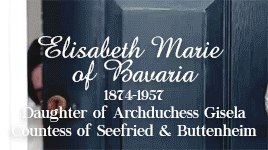




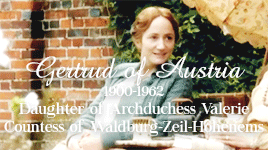

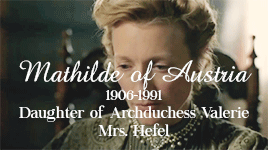
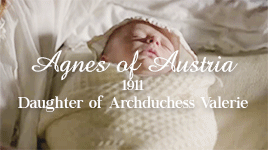
the granddaughters of franz josef i and elisabeth of austria
133 notes
·
View notes
Note
Can you post about grand duchess tatiana of russia?
You mean the daughter of Nicholas and Alix? I’m sorry but she doesn’t really fit my criteria for who I post about on this blog. I usually go by male line descend as this was (unfortunately) the way titles were (and in some places still are) past down. Usually women are part of their father’s house. Tatiana also never had the chance to marry, so she also did not become part of her husband’s house. So I personally count her as a Russian lady. Maybe a blog focussed on Russian history can help you out.
5 notes
·
View notes
Note
Where can I watch sisi 2009 with english subtitles?
You can find it on youtube and WLEXT.
5 notes
·
View notes
Note
It's a oneshot love story
Just like I said before, this is not the kind of blog for that, sorry.
1 note
·
View note